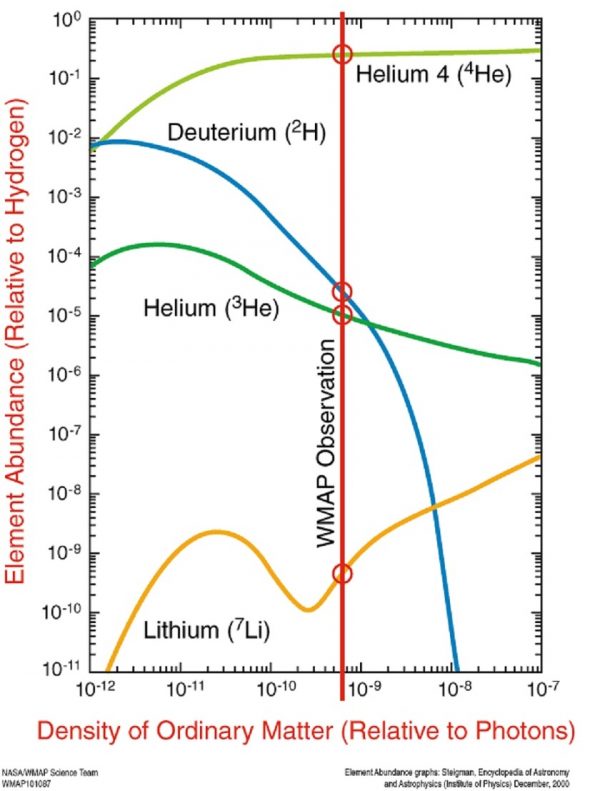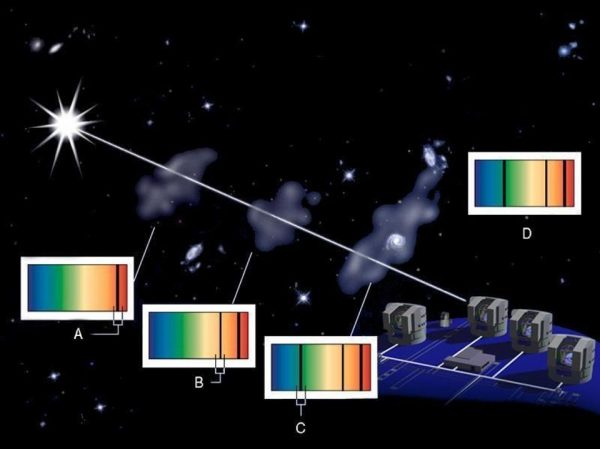"In the current cosmological model, only the three lightest elements were created in the first few minutes after the Big Bang; all other elements were produced later in stars." -Fumagalli, O'Meara and Prochaska, 2011
When it was first conceived, the idea of the Big Bang was spectacular for the fact that it made three incredibly distinct predictions, ranging from the largest scales down to the smallest. As we looked from million to billions of light years away, we should find that the Universe expands at a rate that changes depending on what’s in it; there should be a leftover, uniform glow in all directions; and the first atoms, before stars formed, should exist in a very particular abundance.
 The abundances of helium, deuterium, helium-3 and lithium-7 are highly dependent on only one parameter, the baryon-to-photon ratio, if the Big Bang theory is correct. Image credit: NASA, WMAP Science Team and Gary Steigman.
The abundances of helium, deuterium, helium-3 and lithium-7 are highly dependent on only one parameter, the baryon-to-photon ratio, if the Big Bang theory is correct. Image credit: NASA, WMAP Science Team and Gary Steigman.
These ratios were notoriously difficult to observe, because it required a serendipitous alignment of an ultra-distant light source behind a pristine cloud of gas that never formed stars. And yet, here in the 21st century, we’ve actually found multiple systems that have those exact properties! One can calculate the expected abundances from Big Bang nucleosynthesis, and the measurements are finally getting good enough to compare the results with the predictions. The agreement is beyond spectacular!
- Log in to post comments





